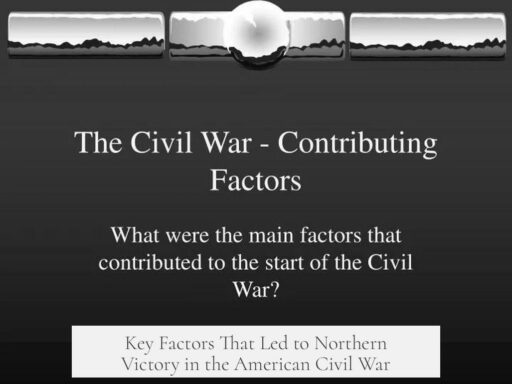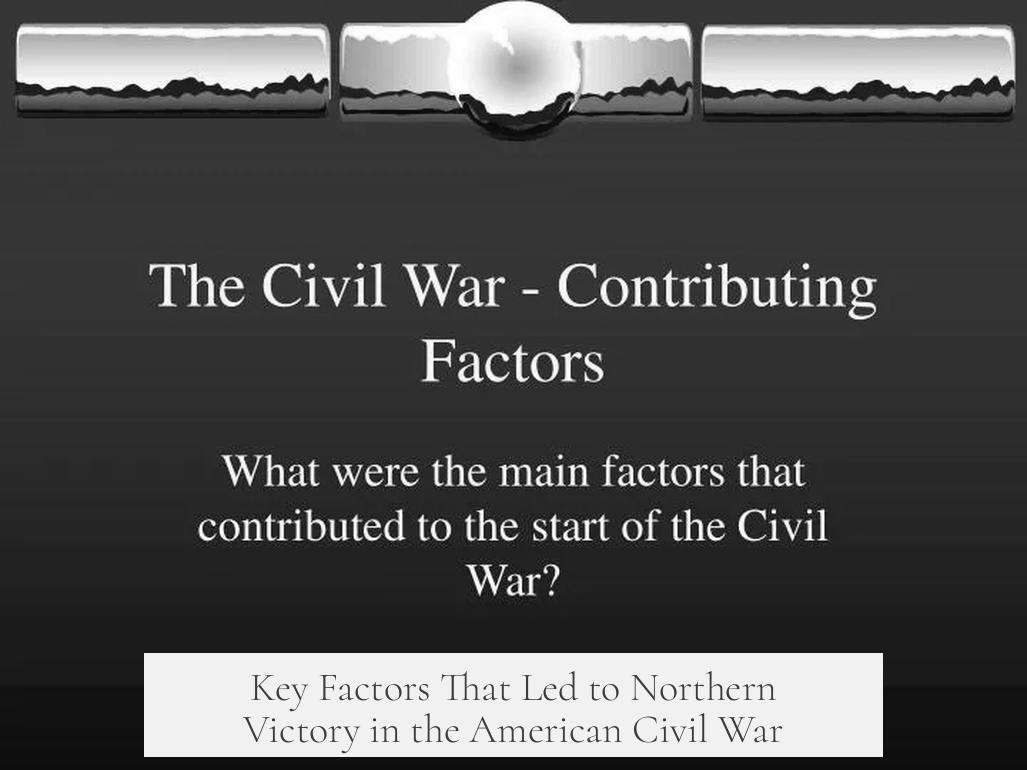The American Civil War turned in favor of the North primarily due to its substantial material, demographic, and economic advantages, superior military leadership and strategy, critical battlefield victories, and the South’s diplomatic isolation and internal weaknesses.
The North held a significant population edge, allowing it to field larger armies and replace losses more effectively. This advantage was bolstered by a steady influx of European immigrants, fueling manpower supplies. The Union’s extensive railroad network and industrial base ensured steady supply lines and equipment production that the agrarian South simply could not match.
Economically, the North’s diverse industrial economy facilitated the production of weapons, uniforms, and other military necessities at a scale the South could not achieve. In contrast, the South’s dependence on cotton and agriculture left it vulnerable to blockades and economic isolation. The Union navy quickly established control over coastal waters and major rivers, tightening the blockade and cutting off Confederate supply routes. This naval superiority strangled the Southern economy and military mobility.
Strategically, the North benefited from a more centralized command. When Ulysses S. Grant rose to overall command, Union forces began coordinated offensives that leveraged their numeric and resource superiority. Grant’s tenacity and strategic vision marked a turning point, ensuring Union armies remained on the offensive. The South initially had competent generals and defensive advantages, winning early battles through superior tactics. However, its smaller population and resource base made sustaining casualties unsustainable. For example, at Chancellorsville, the South won but suffered higher relative losses, weakening its long-term military effectiveness.
Political will played a decisive role. The South aimed to erode Northern resolve by imposing a costly and prolonged conflict, but the North’s commitment endured. Critical moments, like the draft riots in New York City, showed unrest, but decisive Union victories at Gettysburg and Vicksburg in July 1863 revived morale and disrupted Southern momentum. Gettysburg ended Lee’s invasion of the North, causing irrecoverable Southern losses, while Vicksburg gave the Union control of the Mississippi River, effectively bisecting the Confederacy.
The North’s “Anaconda Plan,” involving a naval blockade, control of the Mississippi, and capture of Richmond, steadily strangled Southern resources and logistics. Sherman’s destructive March to the Sea further crippled Southern infrastructure and morale, making continued resistance untenable.
Diplomatic factors also favored the North. The Union’s Secretary of State, William Seward, successfully prevented European powers from recognizing or aiding the Confederacy. The South’s overreliance on “King Cotton” diplomacy failed. The Emancipation Proclamation and framing the conflict around ending slavery made foreign intervention politically impossible, given global anti-slavery sentiment.
Administratively, the Union excelled in resource management and logistics. A unified quartermaster system facilitated efficient supply distribution and rail system maintenance. Conversely, the Confederacy suffered from poor coordination, decentralized command, and inefficient use of scarce resources. The North also had a system for replacing officers lost in the high-casualty battles, slowly eroding the early advantage the South’s experienced officer corps enjoyed.
| Key Factors | North (Union) | South (Confederacy) |
|---|---|---|
| Population | Larger, including immigrants | Smaller |
| Economy | Industrial, diversified | Agricultural, cotton-dependent |
| Military Leadership | Centralized, strategic (e.g., Grant) | Experienced but outnumbered |
| Transportation | Extensive railroads, naval superiority | Limited rail, no navy |
| Political Will | High, reinforced by victories | Divided, weaker cohesion |
| Diplomacy | Effective isolation of South | Failed foreign recognition |
Ultimately, the combination of overwhelming resources, effective leadership, critical battlefield victories, and sustained political and diplomatic efforts enabled the North to prevail. The South’s internal divisions, weaker economy, diplomatic failures, and inability to replace losses doomed its cause despite tactical successes.
- North’s population and industry provided superior manpower and supplies.
- Grant’s leadership unified Northern strategy and leveraged advantages.
- Key victories at Gettysburg and Vicksburg split and weakened the Confederacy.
- Naval blockade and control of rivers isolated the South economically and militarily.
- Diplomatic isolation denied the Confederacy much-needed international support.
- Southern internal tensions and resource shortages hindered prolonged resistance.




